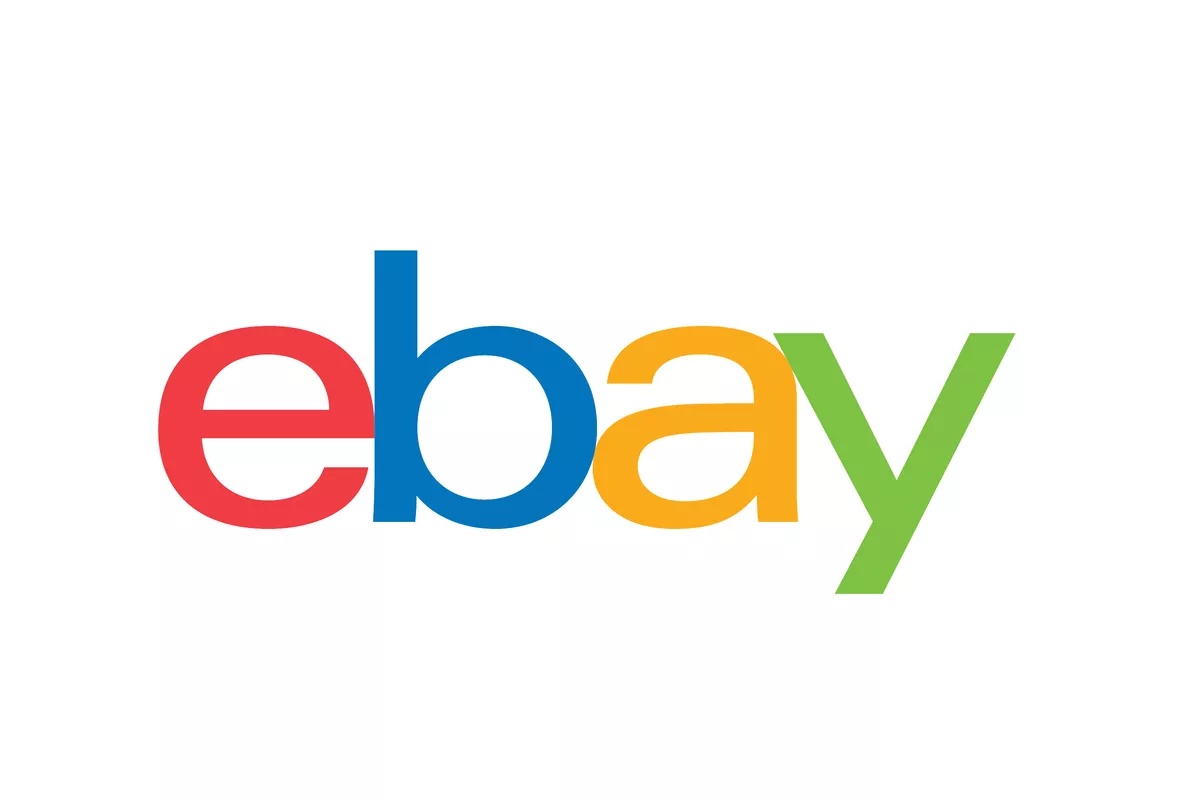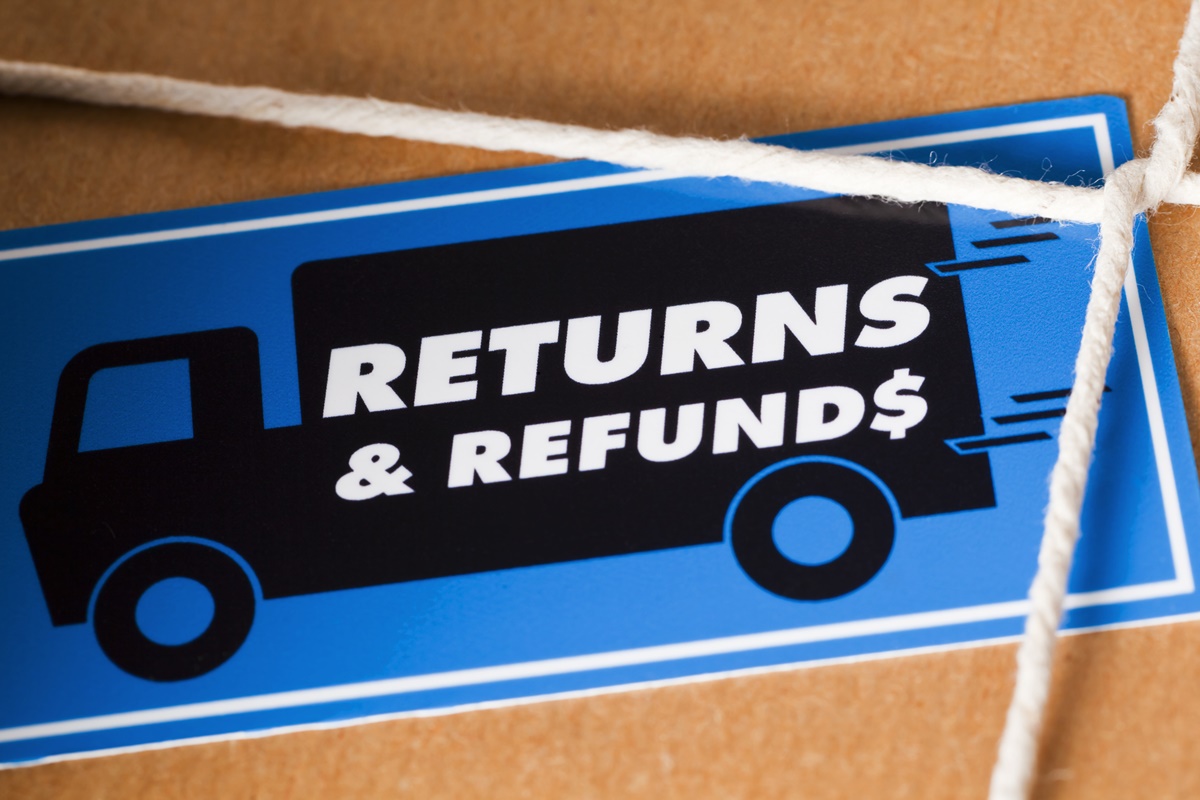Selling on Amazon vs Ebay: Which One Should You Choose?
To grow your eCommerce business, you should join online marketplaces. If you intend to sell your products online, then you can think of the dominant eCommerce sites like eBay and Amazon. They are both giants in the field, and you might wonder the difference between the two platforms and Which One Should You Choose?
eBay and Amazon have their distinctive requirements, product classifications, listing fees, and customers. Now, in this post, we will help you to figure out the difference between them, from here, you can determine which one is right for your business.
Are you ready to get started? Let’s dive in right now.
Related Posts:
- 3 Easy Ways to Find a Seller on eBay You Should Try Now
- Top 9 Selling Items on eBay
- Amazon Dropshipping: How to Start Drop Shipping on Amazon
- How to Sell on Amazon? A Guide To Start Quickly!
What is Amazon?

Amazon has a complicated pricing structure. The company offers sellers 2 alternatives: they can list either as individuals or as professionals.
For individuals, Amazon charges $0.99 per item to list together with a referral fee ranging from 6 percent -45 percent based on the listing category of the item. Besides, the closing fee varies by the weight of the items, except for BMDV such as books, media, DVDs, and video, the sellers have to pay for a fixed price of $1.35 per item.
Based on whether they sell as individuals or as professionals, sellers can list their items in 20-30 different categories. For BMDV sellers, Amazon has established and settled shipping rates. These set shipping rates are fantastic for BMDV purchasers who understand that the overall cost can be easily calculated on Amazon without having to search for the shipping rates of the specific sellers.
With Amazon, you can just input UPC or SKU number of the product to list the selling items on the site. This procedure reduces the time that a seller has to prepare a listing because Amazon employees have already entered the relevant details. Periodic bank transfers to the account of the seller fulfill the payment, and the Fraud Protection program of Amazon protects the sellers.
Read more: How to Sell on Amazon?
What is eBay?

Established in 1995, the business attracted a lot of users, but in recent years, it has dropped off popularity somehow. Nevertheless, today’s eBay has acquired some companies quickly like PayPal, Kijiji, and StubHub. And as of the first quarter of 2019, it had 180 million active buyers.
What is eBay’s source of income, then? The most essential source is from PayPal. In 2017, PayPal got spun off from eBay. The money transfer/payment website makes a huge profit for eBay and accounts for about half of the company ‘s revenue. PayPal fees can potentially reduce the margins of a seller with a 2.9 percent + $0.30 fee on each sale.
Ok, let’s concentrate on the eBay aspect which is comparable to Amazon — the Marketplace. Earlier in its glory days, eBay Marketplace would charge users a fee for insertion depending on the starting bid of the item, and a final value fee whenever the item was sold. Each seller on eBay currently receives a range of free listings. Sadly, eBay continues to charge a final value fee. The final value fee computations have been simplified to a flat 10 percent of the sale price.
For power sellers, eBay provides subscription packages that give sellers some free listings for a monthly charge, a lower insertion fee for sellers running further than their expense account, and a less-simplified yet lower final value fee option.
Together with the Marketplace, sellers can have an option to upgrade their listings like better placement in the search results, more photos. Alternatively, they can choose to list their products at a fixed price. The fixed price listings are subject to the same fees as the listings for auctions.
Read more: How to Sell on eBay: The Definitive Guide
Amazon vs eBay: What are the differences?
Competitiveness

All online sales sites founded on capitalism- a free-market model are competitive in their way. Before we decipher the difference of two sites, note that Amazon is in direct competition with third-party sellers but will most frequently use sellers with small-sized businesses as cannon fodders in a business chess game. In other words, Amazon is intentionally competing with and bringing the third-party sellers down.
Over 1 decade ago, in 2007, 74 percent of the products were sold by Amazon alone, however, by 2015, Amazon sold just 56 percent of the items on its platform compared to its third-party vendors. In 2017, the scale was nearly 50/50, and early in 2018, against the widespread assumption, the sales of Amazon fell to 48 percent, which favored third-party sellers.
However, they still stay competitive. Amazon is famous for selling new products and manages to work in favor of major brands and retailers. In many circumstances, to discover trends and niche markets, Amazon takes advantage of small retailers and then drives them out by underselling and undercutting them. Amazon even owns a list of restricted brands, and if sellers want to sell them, they have to pay a fee.
Overall, Amazon is an ideal marketplace for people to sell strong private label products, and their intense competition makes sure that the best products with outstanding customer service and quality can be generated on their site.
In contrast, eBay is a marketplace that primarily sells used items and collectibles, that is the ultimate online garage sale. However, you will be astonished at this fact:* 81 percent of items sold on eBay are brand new!*.
Inherently, eBay itself does not have a brand itself. It does not try to undercut their sellers’ business, either. It is genuinely an eCommerce platform. Besides, eBay is also a great marketplace that offers small sellers a better platform than Amazon to build their brand.
The underlying truth is that Amazon is a much more competitive market for independent sellers and aims at newer items while eBay provides sellers with the opportunity to establish brand identity, and although most of its goods are new, it offers a niche for used products and collectibles.
Shoppers and Market share

It is stated that Amazon has 310 million active customers and 200 million visitors per month. It is the third-largest retailer in the world behind Alibaba and Walmart and makes up nearly half of all eCommerce sales in the US. Amazon’s market share, to put it in a nutshell, is gigantic.
eBay is said to have 180 million active users. Nevertheless, the company makes up about 7 percent of U.S. eCommerce sales.
From these figures, we can conclude that in the eCommerce world, Amazon has more users and a much larger market share; however, eBay still has a large customer base.
These two highly competitive online marketplaces both incorporate project planning and implementation and try to work it out. When we just take a look at the figures above, though, Amazon appears to be superior again. Amazon is reported to have approximately five million active sellers, while eBay has around 25 million sellers. Eay seems five times more appealing than Amazon given those numbers.
It is not clear about the number of eBay sellers who are individuals who sometimes auction off household items and the number of established companies. On the other hand, on Amazon, you are competing with highly successful companies, and Amazon itself as it possesses more than 80 private label brands.
Competition is more than just about how many sellers there are on each site. To figure out how many active sellers in your niche, you should do some market research for your sake. Even though Amazon appears to have a competitive advantage, eBay may be more appropriate to your company.
You should not conclude about the equality of millions of shoppers that Amazon and eBay have. Because of eBay’s original auction-styled nature, many of eBay’s platform visitors are more price-conscious. They search for special offers. You may notice that they do not want to spend any sort of premium. If you can buy bulk items at incredibly low prices, or selling second-hand goods that you get at Gary Vee-style yard sales, eBay could be the ideal place.
Meanwhile, Amazon consumers are reluctant to find themselves in a reduced price-hunting mindset. Typically, they are more inclined to pay out some extra dollars as they are trusting the platform. Many shoppers even have Amazon Prime membership, which makes them more loyal to Amazon cognitively.
Seller fees

Selling on eBay is certainly cheaper at Amazon given the following aspects: Shipping, storage, distribution, and packaging because while Amazon provides services to help the seller in their tasks, including the likes of Fulfillment By Amazon or FBA. However, presumably, if Amazon helps you by taking care of the task you must perform, you will have to pay for the cost. Bear in mind that even when you do not use the seller services of Amazon, you will still have to pay more fees, however, you will have the option of using such services in the future.
Overall, eBay sellers can retain an average of 5 percent more of their profits than Amazon sellers. But you have to weigh the pros and cons of using a cheaper service or a more all-inclusive service.
Products

You can discover a wide range of items available on Amazon and eBay — both new and used — with billions of various products for sale, however, both platforms have different rules for what can be sold and who can sell them.
Amazon has 119 million products listed on its platform, 4,000 of which are sold per minute — every day you can probably find almost everything on Amazon. And third-party sellers are entitled to sell goods that fall within most categories of Amazon’s merchandise, from clothes and accessories to games and toys, without asking permission.
Some products for sale on Amazon fall into the so-called gated categories, which are usually expensive, sensitive in nature, safety-related, scarce, or collectible. Such goods involve items such as sports memorabilia, fine art, collectibles, manufacturing and science equipment, food, and grocery stores.
There are also prohibited products that may ask you to provide Amazon with extra information or evidence that you are compliant with such regulations. And some products, including magazine subscriptions, lock-picking tools, and cigarettes, essentially are not allowed to be listed on Amazon.
Although a majority of products listed on Amazon are new, used, and renovated ones (that are available via third-party vendors), there are limitations in certain categories of goods.
In terms of the most common product categories on Amazon, electronics are the dominant one, whose customers account for 44% of U.S. shoppers that have bought from Amazon. The next popular categories are clothes, shoes, jewelry (43%), and home and kitchen items (39%).
The same picture is for eBay; it has a wide catalog of items that are available for sale. This eCommerce site, though, is unique in that it highlights the selling of rare and collectible products. The website sells 432,000 collectible items every day.
Since eBay concentrates on these particular items, sellers do not have to get special approval to sell within such categories, such as coins and jewelry. It maintains an extensive list of banned and limited products while containing certain categories like food, alcohol, and tickets to events.
EBay’s top-selling product categories are quite identical to those of Amazon, starting with 16.4 percent of electronics and accessories, and clothing and accessories followed up at 13.8 percent. Nevertheless, eBay is characterized by its third most popular item: 10.5 percent for automotive. Every day, 360 cars and trucks are bought on eBay via mobile devices.
As mentioned above, although eBay is famous for the garage sales location on the Internet, 81 percent of the items in its 1.1 billion listings are brand new.
Shipping and Fulfillment

Another significant difference between Amazon and eBay is the way they manage the shipping and fulfillment. Both of them provide different seller options.
The choice to enroll in FBA is one of the significant advantages for third-party Amazon sellers. Allowing Amazon to store your items and fulfill your orders makes things a lot easier for sellers, and FBA also offers retailers customer support and some marketing benefits, like qualifying for Super Saver Shipping and Amazon Prime. Amazon Prime members — 105 million of whom are subscribers in the U.S. — get two-day free shipping, which may tempt shoppers into clicking “buy.”
On the whole, the advantages of FBA have been known to offer Amazon retailers a boost in sales of 30 to 50 percent. You don’t need to be interested in FBA. Third-party sellers are given the option of packaging and shipping orders when selling items to customers.
Although eBay presently does not have an FBA-like platform, it has revealed plans to introduce Managed Delivery in 2021, a project that will allow sellers who sell a lot of inventory to fulfill orders more efficiently and rapidly.
Since eBay facilitates international purchases, it also provides a Global Shipping Program, allowing sellers to deliver purchased products to the global shipping center of eBay in Kentucky. After this, eBay manages all customs documentation and ships the items to consumers all over the world. Since eBay is in charge of the shipments, eBay will be responsible for any possible delivery failures.
And, although eBay doesn’t offer an Amazon Prime-like program, it’s vital to know that free, fast shipping will make your listings more tempting. With Prime ‘s reputation, online shoppers have come to expect handy and reasonably priced shipping options. 71 percent of eBay orders are freely delivered.
Read more: Amazon FBA Fees
Returns and Refunds

eBay allows sellers to opt-out of returns; on the other hand, Amazon offers a higher security level for consumers who buy goods from third-party sellers, which can encourage customers with greater trust.
As mentioned previously, customers may have a higher level of confidence when making Amazon purchases because of the eCommerce site’s current policies. Amazon’s A-Z Guarantee protects buyers buying from third-party sellers, enabling them to request refunds and returns easily in certain cases. The guarantee involves both the delivery of items on time and the condition of the product. If the buyer is either unsatisfied and does not fix the issue with the seller, then they can file a claim on Amazon.
In contrast, in terms of refunds and returns, eBay may pose further challenges. When listing an item, sellers may select opt out of returns, therefore, when the customer places an order, the seller will not be able to return the item for refund apart from in certain situations.
But eBay does have a Money Back Guarantee policy that protects customers if they don’t get their product, receive an item that is not as described, or get a defective or damaged item.
Pros and Cons of selling on Amazon and eBay

| Pros of Selling On Amazon | Cons of Selling On Amazon |
|---|---|
| High conversion rates | Fierce competition |
| Significant reach | Strict performance criteria |
| Reasonable fee | Restricted brand ownership |
| Access to FBA (Fulfilled by Amazon) | Costly and complex |
| Great support and trust | Lack of patron loyalty |
| Pros of Selling On eBay | Cons of Selling On eBay |
|---|---|
| Lower fee | Humble customer base |
| Reliable reviews | Basic messaging system |
| Increased brand exposure | No delivery fulfillment |
| Access to various seller tools | Lagging listings bulk upload |
| Enhanced affiliate program | Fees may increase |
Amazon vs eBay: Where should you sell on?
Although there’s no straight answer as to whether selling on Amazon or eBay is better, we will show you some aspects to help you determine which platform is appropriate for you.
You should choose Amazon if you are selling out new items, you want to sell the products in high volumes. Amazon is ideal if you are reluctant to manage the fulfillment and execution of inventories. Above all, you are targeting American consumers.
You should bring your products to eBay if they are mainly used items or collectibles, and you want the lowest charges. If you intend to handle the inventory control and fulfillment, eBay is a good option. Besides, you should sell to eBay if you offer your products to an international base of customers.
Select eBay as your platform for selling, if:
- You want the cheapest possible market regarding the fees
- You are a doer who views a company as abundant to handle the shipping and storage complexities
- You want a diverse international base of customers
- You want your strong brand to grow and not compete with eBay for the deals
- You sell restricted products on Amazon including collectibles, used, or brand names on Amazon
Why opt for Amazon? The reasons are as below:
- You don’t bother paying a premium in fees and getting the benefits of having a large company handle shipping for you
- You concentrate more on a target market in the US
- You don’t find a brand identity as vital as creating sales
- You are primarily selling new items and not thinking of selling items from Amazon’s limited list
- You don’t care about Amazon that will possibly weaken your eCommerce company
Conclusion
Now, you may have all learned The difference between Amazon and eBay and have decided which one is best for you and can offer you a successful business.
May you need to research more about other platforms apart from Amazon and eBay, then you can check out our post here: 15+ Best Platforms to Sell Your Products Online.
If you have any questions, comments, or concerns, do not hesitate to leave a comment below or contact us directly. Thank you so much for your time reading!
New Posts






